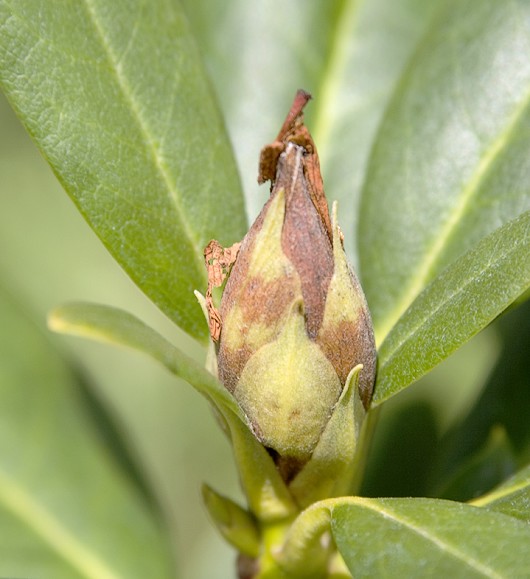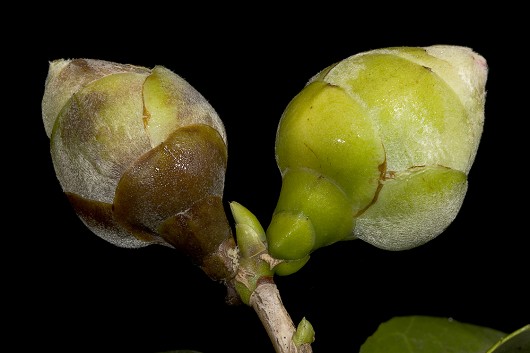Phytophthora ramorum Infecting Camellia and Rhododendron Flower Buds
Phytophthora ramorum Infecting Camellia and Rhododendron Flower Buds
Steve Tjosvold
Question: What is the latest on Phytophthora ramorum in nurseries?
Answer: Phytophthora ramorum, the pathogen that causes Sudden Oak Death, caused extensive natural infection of Camellia flower buds in field experiments conducted in
Question: Why is this important?
Answer: Camellia and rhododendron are the two most important nursery host plants of P. ramorum, accounting for the majority of detections in infested commercial nurseries. Until now, detection of this disease on these nursery hosts has focused on identifying leaf infections because we did not know about the possibility of flower bud infection. In fact, in our field observations, flower buds could be infected, but no leaves were ostensibly visible with symptoms. Furthermore, flower buds may be an important source of inoculum and pathogen spread in nurseries. Flower bud parts are readily susceptible to infection, they can produce copious propagules, and infected whole flower buds or parts eventually fall from the plant and could be blown in the wind to other parts of the nursery or become a suitable source of long-lived propagules in the soil or other leaf litter.
Question: Anything else I should know?
Answer: We have observed other mimic symptoms on Camellia flower buds in the nursery and landscape. Generally, it is typical to see a necrosis on the edges of the small leaf-like structures enclosing swelling and opening flower buds. In addition, infection of other pathogens and Phytophthora species could be possible. Common petal blights can occur on Camellia caused by Ciborinia camelliae and Botrytis. Good descriptions of both petal diseases are available (see below). Laboratory isolation would of course be recommended when any flower bud or petal symptoms are present.
References
Raabe, R.D.,



